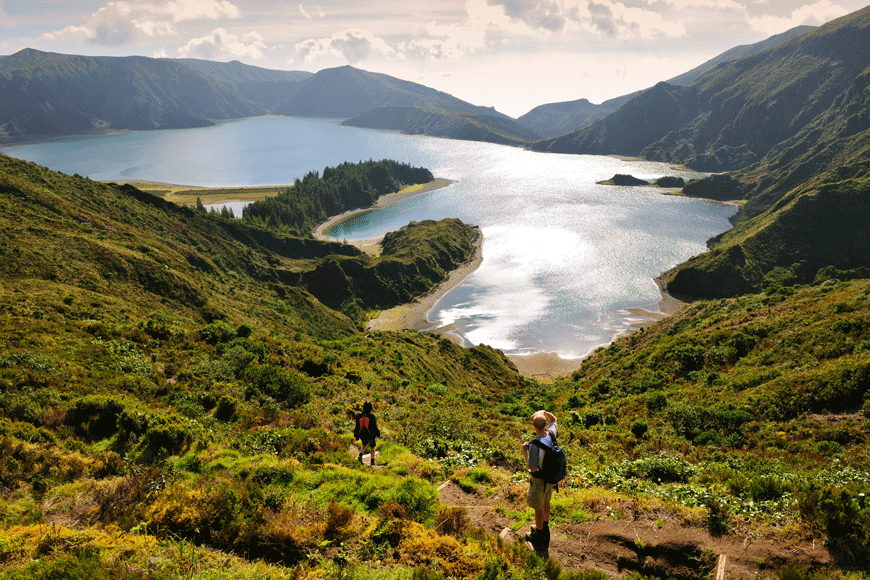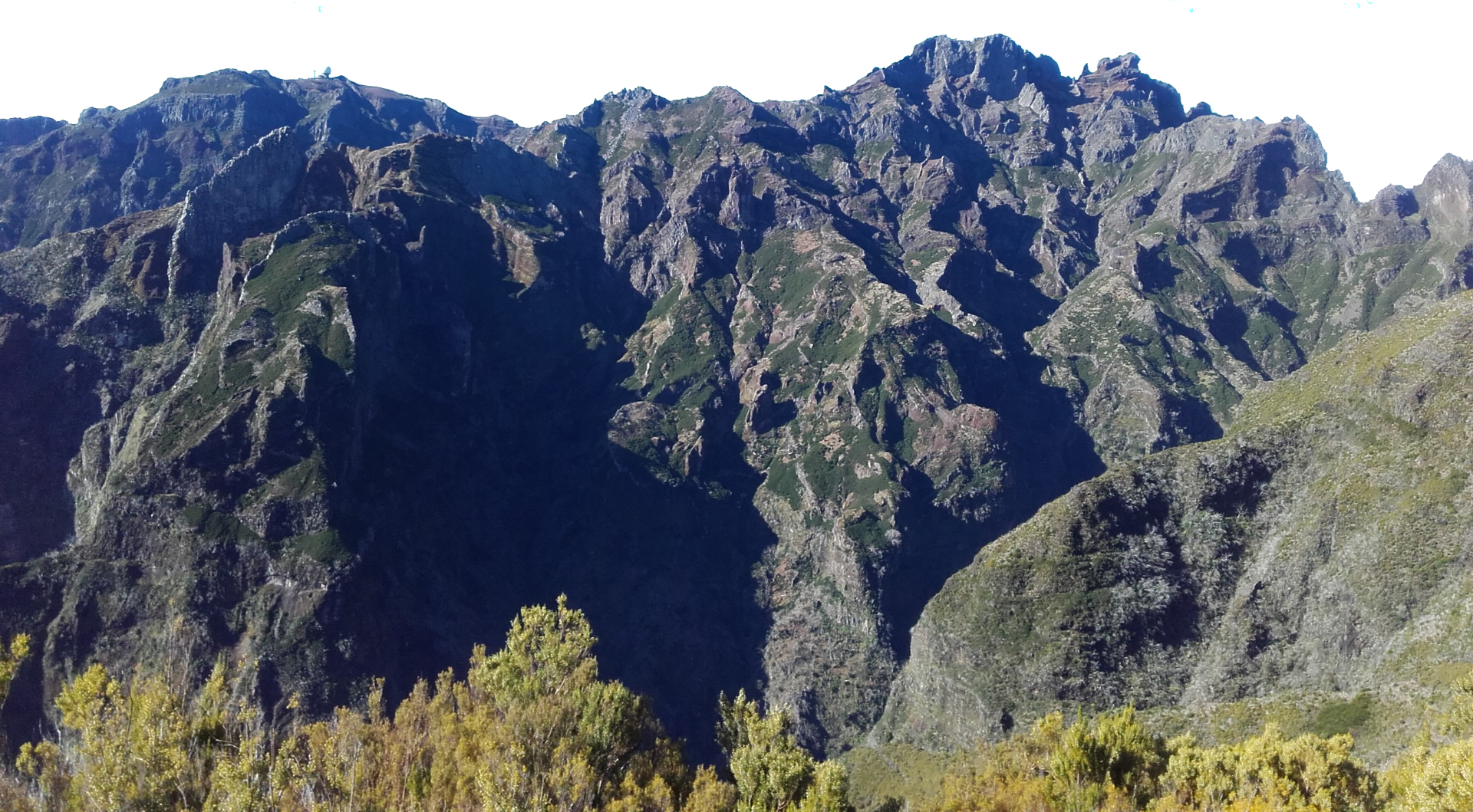Discover the stunning lakes on your walking holiday in the Azores on the island of Sao Miguel.
Discover the legends surrounding the Sete Cidades Lakes on your Azores walking tour.
The Sete Cidades is, without a doubt, the most emblematic site of the Azores. It is also the largest freshwater lake of the archipelago. The caldera diameter is around 5km and about 400m deep. It is thought that this volcanic device has been functioning for about 500,000 years. It contains two crater lakes, Green Lake and Blue Lake, separated by a 7 arch bridge that symbolises the 7 cities of the lost content of Atlantis, supposedly buried beneath the lakes.
A second legend has it that in the parish of the Seven Towns lived a beautiful blue-eyed princess. Delicate and kind, she was passionate about the nature that surrounded her. She fled the cold walls of the kingdom several times to roam the green fields of the island of São Miguel. During one of these escapes, she met a humble shepherd who was tending his flock. After several encounters, the young couple fell in love. The news reached the king who wanted to see his daughter married to a prince from a neighbouring kingdom. He quickly forbade the princess to continue the relationship. The princess and the shepherd met one last time in secret and mourned their sad fate together. The tears shed by the blue-eyed girl formed the blue lake and the tears shed by green-eyed shepherd formed the green lake.
Discover Lake Fogo with its emblematic flora and fauna on your self-guided walking trip in the Azores
The Lagoa do Fogo (Lake Fogo) covers nearly 170km² in the central region of the island. It is thought that this volcano has been active for over 250 000 years. Since 1980, the site's geothermal resources have been used to generate electricity. The caldera, which contains a lake at 578m above sea level and 30m deep, is the youngest caldera on the island (15,000 years old). There has been no eruption since 1563, when the small village of Ribeira Seca was buried (remains of the old fountain opposite the church of S. Pedro in Ribeira Seca).
There are many endemic plants to be admired on this Azores walking trip; Juniperus brevifolia (Azores juniper), Ilex perado (the endemic Macaronesian holly), Vaccinium cylindraceum (blueberries endemic to the Azores) as well as Tolpis azorica (a herbaceous plant endemic to the Azores with serrated leaves and yellow flowers, resembling a dandelion), Leontondon filii (Azores liondent), Erica azorica (Azores heather), Viburnum treleasei (Viorne tin of the Azores).
You can also spot the common buzzard (Buteo buteo rothschildi) which gave its name to the archipelago. When the first discoverers arrived, they thought they saw Goshawks or Sparrowhawks, (Açor in Portuguese), but later would conclude that the birds were a local subspecies of common buzzard. Another interesting specie is the endemic bullfinch (Pyrrhula murina) that the National Geographic has studied and filmed in this massif.
Visiting Lake Furnas, a culinary highlight of your walking stay in the Azores
With its two interlocking caldeiras, the Furnas Valley is full of botanical, geological, architectural, and hydrological surprises long sought after by the bourgeoisie of São Miguel and the other islands. It is estimated that the Furnas Volcanic Complex has been operating for about 750,000 years and that its highest peak is 805m above sea level, at the Salto de Cavalo. The oldest caldera is home to Lake Furnas and is visible from the Pico de Ferro lookout point. The youngest caldera encloses the village of Furnas that has the peculiarity of being located lower than the lake.
On the shores of the lake, a curious scene is played out every morning: the cooking of the local dish: the cozido das Furnas! This delicacy, local to the island of Sao Miguel is a sort of stew. Holes are made in the soil of the solfateres to receive the pots, which will simmer for 5 to 6 hours thanks to the geothermal activity. If you wish to sample the dish on your walking holiday in the Azores (and we highly recommend that you do!), you must order the night before for the next day because the cooking time is long. An unmissable culinary experience!
Where does the name ‘Furnas’ come from?
Furnas does not refer to the fires of hell as one might think, it means caves; cavities that the first inhabitants discovered in the 17th century in this valley. A once hostile environment, this part of the island is now a lush green landscape with an exceptional botanical garden born from the crossroads of the main maritime routes. The Terra Nostra park is one of the most beautiful gardens in Portugal and its hot water swimming pool will leave you with fantastic memories of your Azores walking trip though this valley.




